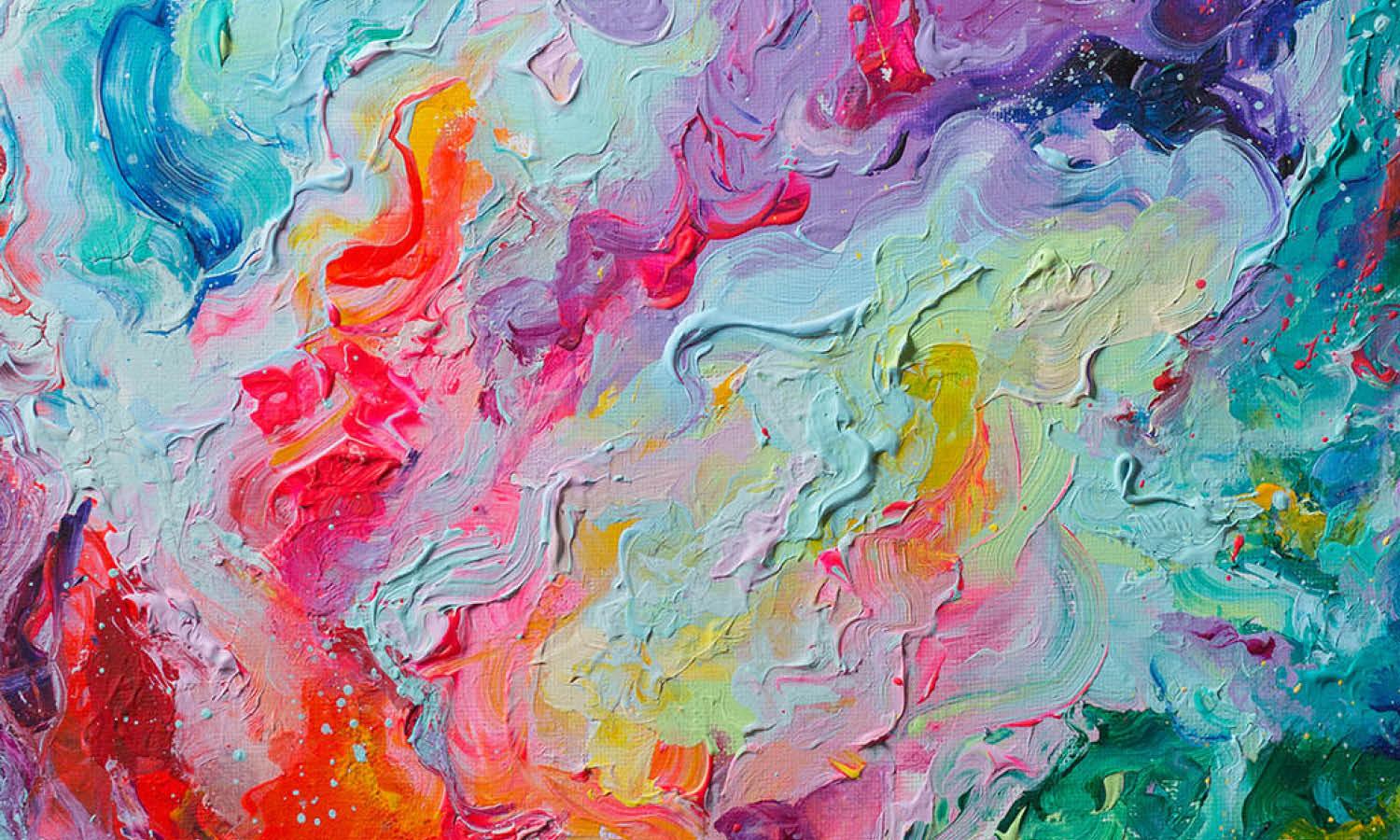Itchiku Kubota Art Museum, Yamanashi | Art Museum Guide

Source: 江戸村のとくぞう, Itchiku Kubota Art Museum, Wikipedia, https://en.wikipedia.org/wiki/File:Itchiku_Kubota_Art_Museum_2018c.jpg
The art museum, Itchiku Kubota Art Museum, Yamanashi, is a celebrated destination that beautifully combines artistic mastery with the serene beauty of nature. Located near the base of Mount Fuji, this museum stands as a tribute to the life and work of the renowned textile artist Itchiku Kubota. His dedication to reviving the ancient Tsujigahana dyeing technique is showcased through a remarkable collection of kimonos that embody both cultural history and contemporary vision.
Visitors to this art museum are welcomed into a world where color, texture, and traditional craftsmanship merge into breathtaking displays. The main galleries feature Kubota’s famous “Symphony of Light” series, where each kimono portrays the essence of natural elements, from glowing sunsets to changing seasons. The museum’s architectural design complements these masterpieces, offering spacious viewing areas and harmonious indoor-outdoor transitions.
Beyond its exhibitions, the art museum, Itchiku Kubota Art Museum, Yamanashi, offers landscaped gardens, stone pathways, and tranquil resting spots that reflect Japanese aesthetics. A tea room, museum shop, and seasonal exhibitions enhance the experience, making it more than a gallery but a cultural retreat. This museum continues to inspire art lovers and travelers seeking a unique encounter with Japanese textile art.
Showcases Masterpieces Of Tsujigahana Dyeing
The art museum, Itchiku Kubota Art Museum, Yamanashi, is celebrated for its extensive display of Tsujigahana dyeing, a technique that dates back to the Muromachi period. This method, once lost to history, involves intricate tie-dyeing, hand-painting, and embroidery on silk to create breathtaking patterns. Itchiku Kubota dedicated decades of his life to reviving this craft, and the results of his efforts are showcased in extraordinary detail throughout the museum.
Inside the exhibition halls, visitors encounter kimono masterpieces that glow with vivid colors and delicate textures. Each piece represents an impressive fusion of traditional skills and innovative interpretations, transforming fabric into vibrant storytelling. The renowned “Symphony of Light” series illustrates changing seasons, celestial phenomena, and landscapes, demonstrating the limitless potential of Tsujigahana dyeing.
The art museum, Itchiku Kubota Art Museum, Yamanashi, goes beyond mere display by offering detailed descriptions and background information for every work. This helps visitors appreciate the artistic process, from initial sketches to finished kimonos. These collections not only preserve a centuries-old craft but also highlight how a single artist’s vision can bring new life to cultural heritage. The museum stands as a beacon for those who value art, tradition, and innovation.
Features The Vision Of Itchiku Kubota
The art museum, Itchiku Kubota Art Museum, Yamanashi, embodies the creative spirit of Itchiku Kubota, a visionary who viewed textile art as a profound expression of nature and life. His work goes beyond aesthetic beauty, offering a glimpse into his philosophy of harmony between humanity and the natural world.
Kubota believed that art should evoke deep emotions and connect people to their surroundings. In the museum’s galleries, his personal journey is illustrated through sketches, notes, and textile experiments that reveal his relentless pursuit of perfection. Visitors witness how he studied traditional methods, innovated techniques, and invested years in developing new ways to interpret landscapes and seasons through dyeing.
Among the highlights is the mesmerizing “Symphony of Light” series, where each kimono forms part of a grand panorama inspired by the universe and the cycles of time. The art museum, Itchiku Kubota Art Museum, Yamanashi, uses thoughtful layouts and lighting to emphasize these artistic narratives, allowing viewers to immerse themselves in Kubota’s world.
By exploring this museum, guests gain insight into an artist who combined ancient tradition with modern imagination. Kubota’s vision continues to inspire designers, artists, and visitors, making the museum not only a place of preservation but also a source of creative enlightenment.
Surrounded By Scenic Natural Beauty
The art museum, Itchiku Kubota Art Museum, Yamanashi, is set within a stunning natural environment that enhances every visitor’s experience. Located near the northern base of Mount Fuji, the museum is surrounded by lush forests, clear streams, and landscaped gardens that change beautifully with the seasons. From the moment guests approach the grounds, they are greeted by pathways lined with stone lanterns, moss‑covered rocks, and carefully maintained greenery that reflect traditional Japanese aesthetics.
The outdoor spaces are designed to create a seamless connection between the art inside and the world outside. Cherry blossoms in spring, vivid green foliage in summer, golden leaves in autumn, and snow‑dusted branches in winter provide a dynamic backdrop that transforms with nature’s rhythm. The surrounding views of Mount Fuji and Lake Kawaguchi add an unforgettable sense of place and tranquility.
Visitors often take time to wander through the garden areas, pausing to enjoy ponds, wooden bridges, and shaded seating areas. These features invite moments of reflection before or after exploring the galleries. The art museum, Itchiku Kubota Art Museum, Yamanashi, not only celebrates textile art but also demonstrates how natural beauty can heighten the appreciation of culture, making the visit deeply memorable.
Houses The Breathtaking Symphony Of Light Series
The art museum, Itchiku Kubota Art Museum, Yamanashi, is home to the world‑famous “Symphony of Light” series, a collection of kimonos that has captivated art enthusiasts worldwide. This series represents Itchiku Kubota’s most ambitious and celebrated work, inspired by his deep admiration for natural phenomena and the passage of time.
Displayed in a carefully arranged gallery, these kimonos together form an expansive panoramic vision. Each garment is meticulously dyed and embroidered, illustrating sunsets, oceans, mountains, and seasonal landscapes. When viewed in sequence, the individual pieces merge into a continuous visual story, evoking the harmony and mystery of the universe.
Visitors to the art museum, Itchiku Kubota Art Museum, Yamanashi, can walk along the display and witness how Kubota’s technical mastery and artistic imagination converge. The interplay of colors, patterns, and textures reflects years of experimentation and devotion to the ancient Tsujigahana technique. Soft lighting and thoughtful spacing within the gallery enhance the impact of each work, allowing viewers to pause and appreciate the details.
This collection is more than an exhibition; it is a legacy that defines the museum’s identity. Experiencing the “Symphony of Light” leaves visitors with a lasting impression of Kubota’s vision and the boundless possibilities of textile art.
Combines Traditional And Modern Architecture
The art museum, Itchiku Kubota Art Museum, Yamanashi, is admired not only for its extraordinary textile collections but also for its architectural design that harmoniously blends traditional and modern elements. Upon entering, visitors notice how natural materials such as wood, stone, and bamboo are integrated into the building’s structure, reflecting the essence of Japanese craftsmanship. These materials create a warm and inviting atmosphere, echoing the heritage of old Japan.
At the same time, the museum incorporates modern architectural techniques, ensuring open spaces, clean lines, and strategic lighting that highlight the exhibited artworks. Large windows frame views of the surrounding gardens and Mount Fuji, allowing the outdoors to become part of the interior experience. The interplay of natural light with the soft textures of the interior surfaces creates a sense of calm and contemplation.
Each room within the art museum, Itchiku Kubota Art Museum, Yamanashi, has been thoughtfully designed to provide both functionality and aesthetic appeal. Traditional rooflines and ornamental details blend with contemporary gallery layouts, demonstrating a seamless fusion of eras. This architectural approach reflects Kubota’s philosophy of honoring the past while embracing innovation, offering visitors a physical space that feels timeless yet forward‑looking.
Offers Immersive Exhibition Spaces
The art museum, Itchiku Kubota Art Museum, Yamanashi, is renowned for creating exhibition spaces that fully immerse visitors in the world of textile artistry. Instead of merely displaying kimonos behind glass, the museum carefully designs each gallery to evoke emotion and encourage deeper engagement.
Soft lighting and thoughtfully arranged displays allow each textile’s intricate patterns and colors to be appreciated from multiple angles. The spacious layout invites visitors to move freely, pause, and study the artworks without feeling rushed. Wooden floors and natural textures in the exhibition areas add warmth and complement the vibrant fabrics on display.
One of the museum’s most striking features is how the arrangement of kimonos often forms large‑scale visual narratives. For example, the “Symphony of Light” collection is positioned to create a sweeping panorama, making viewers feel as though they are standing inside a living canvas. Informational panels and artist notes are integrated into the design, offering insights into Itchiku Kubota’s process and inspiration.
The art museum, Itchiku Kubota Art Museum, Yamanashi, transforms a visit into more than observation; it becomes an experience that stimulates curiosity and wonder. These immersive spaces honor the art form while ensuring that every visitor gains a meaningful connection to Kubota’s extraordinary legacy.
Includes A Serene Outdoor Garden
The art museum, Itchiku Kubota Art Museum, Yamanashi, is not only a space for viewing remarkable textile art but also a destination where nature plays a central role. The museum grounds feature a meticulously designed outdoor garden that invites visitors to slow down and appreciate the surrounding environment. Winding stone pathways lead through carefully arranged plants and trees, each chosen to reflect seasonal changes.
In spring, visitors encounter cherry blossoms that frame the museum’s structures with soft pink petals, while summer offers rich green foliage that provides shade and tranquility. Autumn transforms the garden with vivid reds and golds, and winter presents a calm, snow‑dusted landscape that feels peaceful and meditative. Water features, such as small ponds and gentle streams, add soothing sounds that enrich the atmosphere.
Strategic placement of benches and viewing spots encourages guests to pause and reflect, making the outdoor space an extension of the art inside. The art museum, Itchiku Kubota Art Museum, Yamanashi, uses this serene garden to connect its textile masterpieces with the beauty of the natural world, creating a holistic experience that blends culture, art, and nature in perfect harmony.
Provides A Museum Shop With Unique Items
The art museum, Itchiku Kubota Art Museum, Yamanashi, enhances every visit by offering a thoughtfully curated museum shop filled with distinctive items. This shop reflects the artistic themes found throughout the museum and allows guests to take home meaningful keepsakes.
Within the shop, visitors discover an array of products inspired by Itchiku Kubota’s textile artistry. Exquisite scarves, accessories, and decorative goods feature patterns that echo the intricate designs seen in the exhibits. High‑quality reproductions of Kubota’s works, along with art books and postcards, provide opportunities to continue exploring his techniques and vision beyond the museum walls.
The museum shop also supports local craftsmanship, showcasing items created by artisans who share the museum’s dedication to preserving traditional skills. Carefully displayed shelves and inviting layouts make browsing a pleasant experience, encouraging visitors to spend time choosing the perfect souvenir or gift.
Every purchase at the art museum, Itchiku Kubota Art Museum, Yamanashi, carries a story that connects back to the artist’s legacy. By offering these unique items, the shop becomes more than a retail space—it serves as an extension of the museum’s mission to inspire appreciation for textile art and Japanese cultural heritage.
Highlights Cultural And Historical Contexts
The art museum, Itchiku Kubota Art Museum, Yamanashi, offers more than a display of stunning textiles; it provides visitors with a deep understanding of Japan’s cultural and historical heritage. Each exhibit is carefully curated to reveal the origins of Tsujigahana dyeing, a technique that flourished during the Muromachi period but was later lost to history. Through detailed panels, archival images, and explanations, the museum traces how this complex craft was once a symbol of high status and refined taste in Japanese society.
Visitors learn how Itchiku Kubota rediscovered this ancient art form and devoted his life to perfecting it. Historical references are woven into the presentation, illustrating how the textiles mirror Japan’s natural landscapes, seasonal festivals, and cultural values. The museum creates a bridge between past and present by showing how ancient methods were reinterpreted through Kubota’s contemporary vision.
By walking through the galleries, guests gain insight into the evolution of textile design and its significance in Japanese culture. The art museum, Itchiku Kubota Art Museum, Yamanashi, thus becomes an educational platform that celebrates heritage while encouraging a renewed appreciation for traditional craftsmanship and its place in modern artistic expression.
Welcomes Both Local And International Visitors
The art museum, Itchiku Kubota Art Museum, Yamanashi, is designed to provide a warm and inclusive experience for visitors from around the world. Its thoughtful facilities and clear signage make exploring the museum enjoyable for both local guests and international travelers seeking a deeper connection with Japanese art.
Multilingual guides and exhibition panels are available throughout the galleries, ensuring that visitors can fully understand the stories behind each kimono masterpiece. Staff members are known for their friendly and knowledgeable assistance, ready to answer questions and provide context about Itchiku Kubota’s works.
The museum’s location near Mount Fuji attracts travelers from various countries, and its welcoming atmosphere ensures that cultural differences enhance rather than hinder the experience. Group tours, educational programs, and special events are often organized to engage a wide audience, further broadening its reach.
From the tranquil garden to the meticulously arranged exhibition halls, every detail is designed to make guests feel comfortable and inspired. The art museum, Itchiku Kubota Art Museum, Yamanashi, stands as a place where people from diverse backgrounds can unite in their appreciation for textile art, cultural heritage, and the enduring legacy of Itchiku Kubota.
Conclusion
The art museum, Itchiku Kubota Art Museum, Yamanashi, offers an unforgettable journey through Japanese textile artistry and cultural heritage. From the breathtaking “Symphony of Light” series to its serene gardens and thoughtfully designed architecture, every aspect reflects Itchiku Kubota’s devotion to beauty and tradition. Visitors can immerse themselves in the history of Tsujigahana dyeing while enjoying an inspiring environment that blends nature and art seamlessly. Whether exploring the immersive exhibition spaces or selecting a unique item from the museum shop, each moment leaves a lasting impression. This remarkable art museum continues to honor and celebrate a visionary legacy.
Let Us Know What You Think!
Every information you read here are written and curated by Kreafolk's team, carefully pieced together with our creative community in mind. Did you enjoy our contents? Leave a comment below and share your thoughts. Cheers to more creative articles and inspirations!
















Leave a Comment